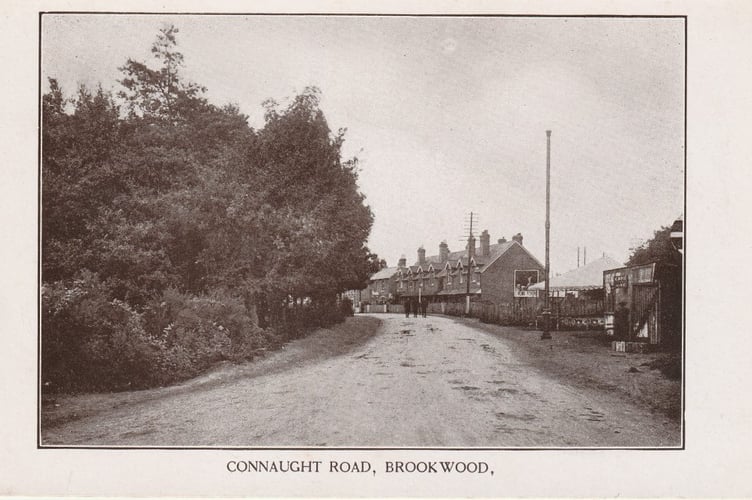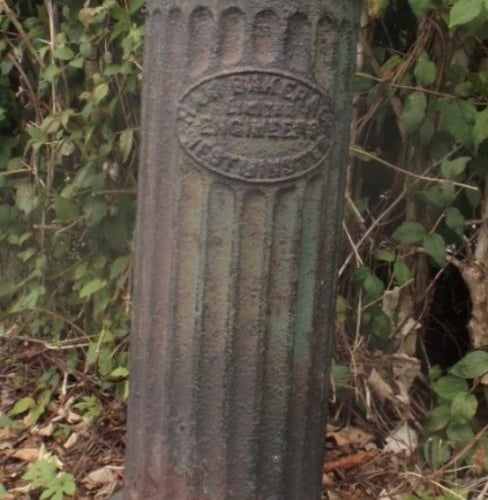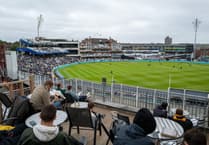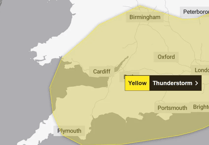“WHERE there’s muck there’s brass” is a well-known phrase. But in the Woking area, it might be more appropriate to say “Where’s there’s muck there’s iron”.
Three weeks ago, Peeps into the Past focused on stink pipes, cast-iron pipes which vent noxious gases from underground sewers by releasing it high above street level.
Continuing that theme, we look at the history of the area’s sewage disposal systems.
There was no mains drainage in the Woking area until 1896. Then a sewage works was opened at the end of Carters Lane, Old Woking. In the years that followed, pipes were laid throughout the district reaching Horsell in 1907.
Byfleet and Pyrford got its sewage system in 1912 with works at Wisley. The stink pipes that remain today around the Woking area appear to follow the line of the sewers.
Researcher Mark Coxhead and I have a common interest in this topic. Mark has been out photographing the pipes and looking at the subject in back copies of the News & Mail.

And I have just discovered that some stink pipes can be glimpsed in early 20th century picture postcard street views, when they must have been newly erected.
News of the issues surrounding sewage, water supplies and the problems of where to dump refuse were hot topics in local newspapers at the turn of the 20th century.
On 5 April 1909, the News & Mail reported that at a meeting of Chertsey Rural District Council there had been serious complaints about cesspools in Pyrford. Mr A Douglas Tisdale had written a letter to the council saying that unless his cesspool was emptied without delay the consequences were likely to be serious, both for his family and his neighbours.

The meeting also heard that sewage was backing up into one house, and the occupants were suffering from sore throats, which they attributed to the smell.
Residents were enticed to privately subscribe to having their sewage removed by carts. A process akin to the “night soil” men who in large urban areas came around at night to clear the muck away.
There was mention at that meeting of plans for a proper sewage system, with the council’s medical officer saying there were many houses in Pyrford which could be joined to the Byfleet sewage system. But they would not do that without involving the whole parish of Pyrford in the scheme. He added that he did not “think Pyrford was yet ripe for joining as a whole”.

However, plans moved ahead and in October 1910 the News & Mail reported: “A further step towards the commencement of the work entailed by the new sewage disposal scheme for the parish of Byfleet was taken by the Chertsey Rural District Council at their meeting on Tuesday, when a tender for the carrying out of the work was accepted and the clerk of works appointed.”
The firm of Hardy & Co of Woking was chosen with its tendered cost of £22,922. It was the cheapest offered. Of the 13 other firms who had put in bids, A. H. Price & Co from Nottingham was the next cheapest quoting £23,110. The highest was Kavanagh & Co of Surbition who was offering to do the work for £32,756.
The remaining stink pipes in the area presumably continue to do what they were first intended to do. But they seem somewhat neglected.
If you have some memories or old pictures relating to the Woking area, call me, David Rose, on 01483 838960, or drop a line to the News & Mail.
David Rose is a local historian and writer who specialises in what he calls “the history within living memory” of people, places and events in the west Surrey area covering towns such as Woking and Guildford. He collects old photos and memorabilia relating to the area and the subject, and regularly gives illustrated local history talks to groups and societies. For enquiries and bookings please phone or email him at: [email protected]




